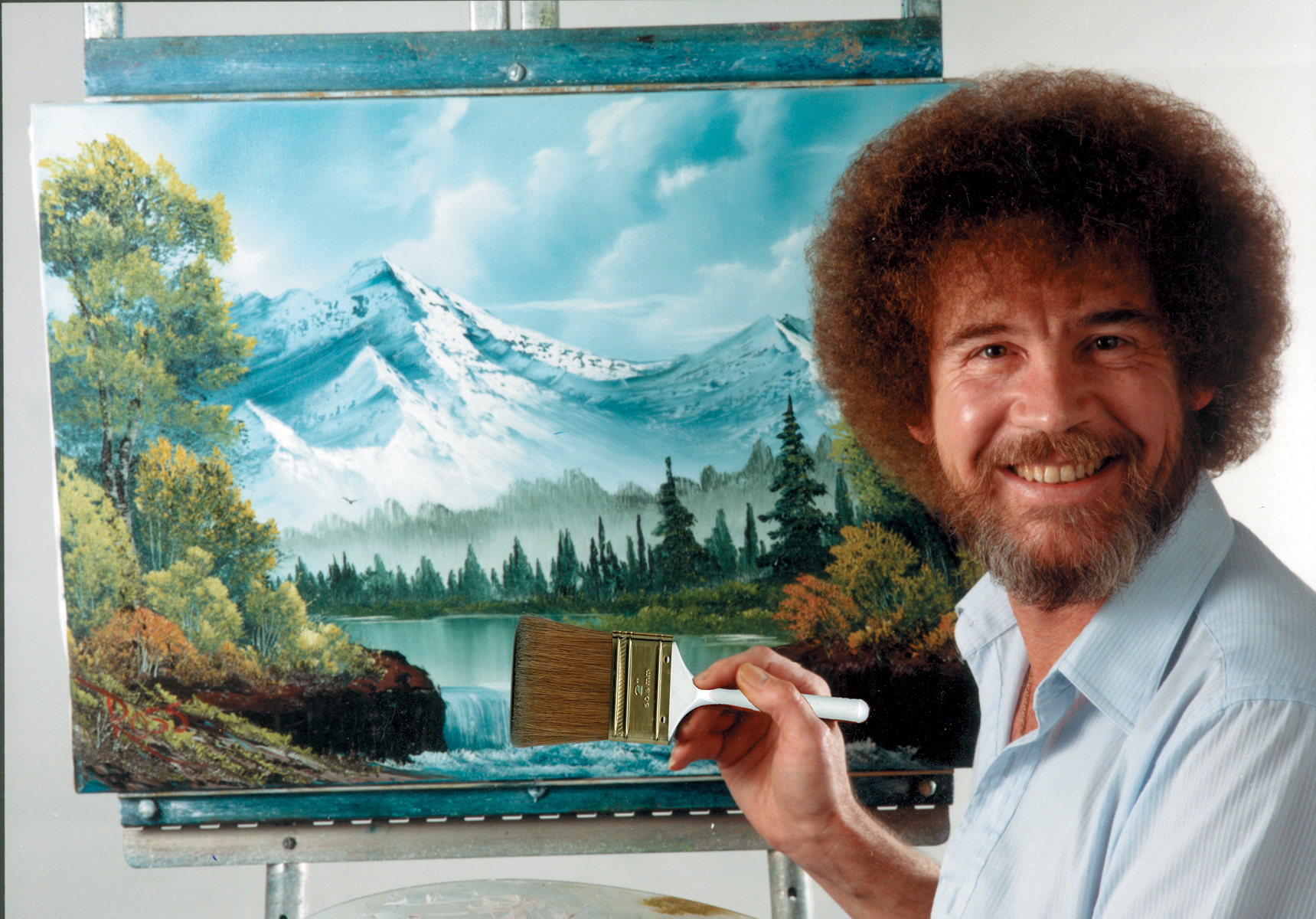Ross, Bob (1942-1995), an American painter and television personality, taught students and viewers to create natural landscapes with oil paint. Ross traveled the United States teaching painting courses and workshops. His show, “The Joy of Painting,” aired on public television from 1983 to 1994. Ross is remembered for his warm, soothing voice and gentle teaching manner, for example encouraging his students to paint “happy little trees.” Ross famously reassured his viewers, “We don’t make mistakes. We just have happy accidents.” Ross is also widely recognized for his distinctive beard and Afro hairstyle.

Robert Norman Ross was born in Daytona Beach , Florida , on Oct. 29, 1942. He grew up in Orlando . As a teenager, Ross left school to work with his father as a carpenter .
At the age of 18, Ross joined the United States Air Force . A few years later, he was transferred to Alaska . The natural beauty there inspired Ross to take up landscape painting. He took painting lessons at a United Service Organizations (USO) club in Anchorage . He also worked as a bartender to make extra money. Ross began painting Alaskan landscapes on pans used to pan for gold. He sold these paintings to customers at the bar.
In the mid-1970’s, Ross saw a television show called “The Magic of Oil Painting,” starring the German painter Bill Alexander. Alexander taught what he called the “wet-on-wet technique.” It involved painting directly onto a canvas that had been treated with gesso << JEHS oh >> , a smooth, paintlike material. By painting in oils over a layer of wet gesso, Alexander could finish a painting in one sitting, while the paint was still wet. This technique is traditionally known as painting alla prima. It allows the artist to blend colors directly on the canvas, without waiting for the underlayers to dry. Ross traveled to Los Angeles , California, to learn from Alexander.
In 1981, Ross retired from the Air Force to become a full-time painter. He was hired as an instructor by the Magic Art Company, which provided courses on Alexander’s painting technique. Ross traveled the United States teaching the wet-on-wet painting style. He soon left the Magic Art Company to go into business with the American artist Annette Kowalski. He began teaching his own art classes in shopping malls and art supply stores in and around Washington, D.C. At first, few students were interested in taking classes from Ross, who was not well known. To save money on haircuts, Ross styled his hair into an Afro. Ross eventually tired of the hairstyle, but it had become too widely recognized to change it. An image featuring the Afro became the logo for his and Kowalski’s company, Bob Ross, Inc.
In 1982, the Public Broadcasting Service (PBS) television station WNVC in Virginia invited Ross to film a television series. The first season of “The Joy of Painting” aired in 1983. Ross began each episode with a blank canvas, completing an entire painting over the course of 30 minutes using the wet-on-wet technique. After the first season, “The Joy of Painting” was taped at the Indiana-based PBS station WIPB. The show aired on public television channels around the United States.
Ross’s relaxed style, his passion for painting, and his skill made “The Joy of Painting” a hit. Viewers appreciated his words of encouragement and his assurance that anyone who made a sincere effort could paint. Ross also used the show to promote compassion for animals and to encourage wildlife conservation . He rescued and rehabilitated (restored to health) many injured and abandoned animals throughout his life. Over the years, he brought a number of them onto the show, including an owl, a raccoon, and a squirrel named Peapod.
Ross and Kowalski continued to travel and teach while the show aired. They also marketed a line of oil paints and painting supplies created to Ross’s standards. In addition, the partners published several instructional painting books. Ross produced tens of thousands of paintings in his lifetime. He died on July 4, 1995.
Long after Ross’s death, video clips from the “Joy of Painting” became popular on the Internet, in part due to an effect called Autonomous Sensory Meridian Response (ASMR). ASMR is a poorly understood condition in which certain sounds or other sensations seem to trigger a feeling of deep relaxation and euphoria (well-being) in certain people. Many people have cited Ross’s mellow voice and almost hypnotic speech patterns as an example of an ASMR trigger.
